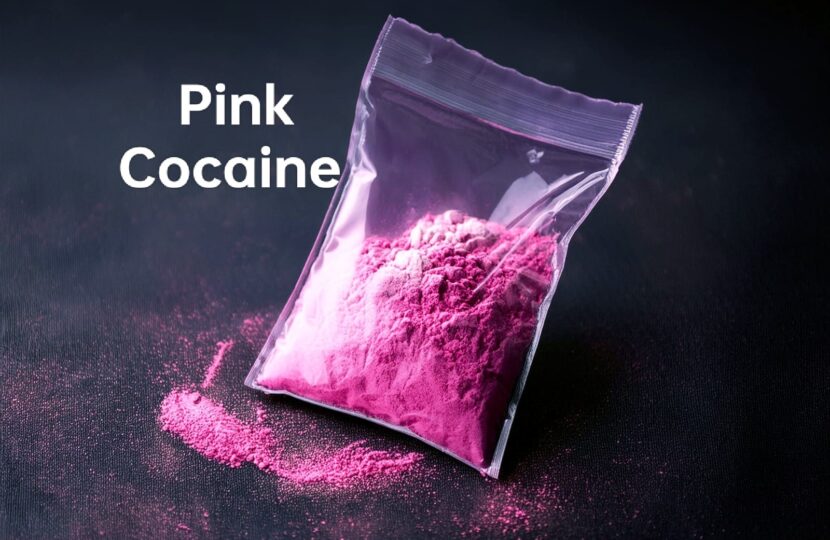Pink Cocaine Effects on Health: Pink cocaine, despite its name, contains no organic cocaine. Pink cocaine is a dangerous combination of synthetic substances like 2-CB, MDMA (ecstasy), ketamine, and caffeine. Its effects are unpredictable, and posses significant risks to mental and physical health. Prolonged use can result in irreversible damage, including cognitive impairments, cardiovascular issues, and severe mental health problems.
What Is Pink Cocaine?
Pink cocaine, also known as “tusi,” is a synthetic designer drug gaining popularity worldwide. Unlike traditional cocaine derived from coca plants, pink cocaine combines various substances that alter brain function in complex and hazardous ways. This blend of stimulants, psychedelics, and dissociatives can create a unique but dangerous cocktail of effects.
Components of Pink Cocaine
- 2-CB: Originally developed for therapeutic purposes, this psychedelic interacts with serotonin receptors, heighten sensory experience and sometimes cause hallucinations.
- MDMA (Ecstasy): Known for its euphoric effects, MDMA releases serotonin and dopamine, and foster feeling of joy and connectedness but parallelly risk for dehydration and hyperthermia.
- Ketamine: Used medically as an anesthetic, ketamine causes dissociative effects, such as detachment from reality and out-of-body sensations.
- Caffeine: A stimulant that increases heart rate and alertness but may contribute to anxiety and dehydration when combined with other substances.
How Pink Cocaine Differs from Regular Cocaine
While regular cocaine directly stimulates the central nervous system, pink cocaine’s combination of substances impacts multiple brain receptors, and produce a fusion of stimulant, psychedelic, and dissociative effects. These effects amplify each other, and making pink cocaine unpredictable and life-threatening.
Pink Cocaine Effects on Health: Intoxication and Post-Effects
Pink cocaine produces a range of effects, both immediate and long-term. The consequences intensify with prolonged use, akin to being trapped in a black hole where risks multiply.
Short-Term Effects
- Euphoria and Sociability: Users may experience extreme happiness and openness, leading to a loss of inhibitions.
- Hallucinations: Distorted perceptions, including visual and auditory hallucinations, can lead to dangerous behaviors.
- Increased Heart Rate and Blood Pressure: Stimulants like MDMA and caffeine strain the cardiovascular system, and possess fatal risks.
Long-Term and Severe Effects
- Anxiety and Paranoia: As the drug wears off, users often feel intense anxiety, paranoia, or confusion.
- Nausea and Vomiting: The body’s response to the chemical overload can cause dehydration and serious health issues.
- Elevated Body Temperature: MDMA can lead to overheating, kidney failure, or death.
- Seizures and Heart Rhythms: Irregular brain and heart activity can result in life-threatening seizures.
- Coma or Unconsciousness: High doses may lead to unconsciousness, increasing the risk of injury.
Treatment: The Path Toward Recovery
Addressing pink cocaine use requires a multifaceted approach. Recovery is possible with proper intervention and support.
1. Detoxification
The first step is medical detox to safely detox the substances from the body under professional supervision.
2. Counseling and Cognitive Behavioral Therapy (CBT)
Therapy helps users identify triggers, change destructive behaviors, and develop healthier coping mechanisms.
3. Relapse Prevention
Education about the dangers of pink cocaine, combined with support networks, reduces the risk of relapse.
4. Rehabilitation Programs
Comprehensive rehabilitation treatment offers medical care, therapy, and life skills training to help individuals reintegrate into society.
Awareness, understanding and action
In India, where a large youth population is increasingly exposed to the dangers of designer drugs, it is vital to spread awareness about the risks of substances like pink cocaine. The scientific community, alongside policymakers and healthcare providers, must work together to create prevention programs, offer rehabilitation services, and provide the tools necessary for young people to navigate an increasingly complex world of psychoactive substances. Through understanding and conscious action, we can combat the growing threat of pink cocaine and protect the well-being of future generations.



